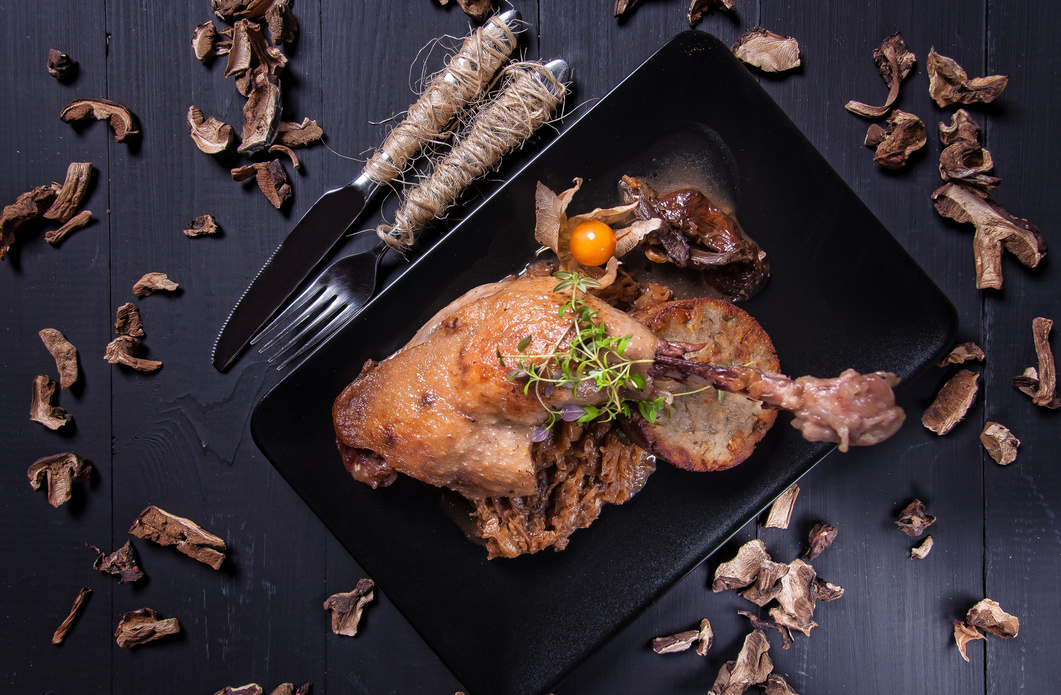November is a time of exceptional flavors – the month when goose meat reigns supreme on Polish tables. Considered an aristocracy in the world of poultry, goose meat combines refined taste with health values, so it fits perfectly into luxury culinary trends. In Poland, especially on November 11, St. Martin’s Day, the tradition of eating goose meat takes on special significance, and Chef Andrea Camastra, a Michelin-star winner, inspires people to rediscover this dish.
Queen of Poultry and Flavors
Rich flavor, meat of excellent texture and healthful properties are the hallmarks of goose meat. Poland, which is one of the largest European producers of this unique meat, has only recently begun to appreciate its qualities anew. “In the past, the goose was a royal bird, a symbol of luxury, but over time its popularity declined,” Camastra explains. “Today, just as it has succeeded with the pigeon, it is worth making goose meat return to our tables as a dish full of flavor and elegance.”
Goose meat in Polish tradition
Polish culinary tradition shows goose meat as a dish for special occasions. “The best goose meat is on St. Martin,” says an old Polish proverb, which reminds us of the celebration of this unique meat. In the past, goose meat was prepared in a variety of ways, from classic roasting to smelting lard, which was used as a natural remedy for colds and joint pains, and even as a cosmetic. Camastra reminds us of the Polish roots of this dish and its rich history, while inspiring us to discover new ways of serving goose meat.
Secrets in preparing goose meat
When asked about the unusual spices that give goose meat depth and character, Chef Camastra shares his secrets: “Goose goes well with juniper berries, star anise, bay leaves, and cocoa powder.” The addition of cocoa adds a unique depth to the dish, introducing a hint of dark chocolate, which harmonizes perfectly with the intense flavor of the meat. Despite the excellent quality of the meat, goose requires proper preparation. “One of the most common mistakes is overcooking the breast,” explains Camastra. He recommends that the breasts be served in a very pink state – only then do they retain their natural tenderness and juiciness.
We invite you to the table where tradition meets fine dining, and where taste takes us to the world of trulyluxury polish cuisine
Chef Andrea Camastra reminds us of the culinary potential of goose meat, inspiring bold flavor combinations and innovative approaches that create new standards in Polish cuisine. Inspired by Polish tradition, but adding a modern twist, he invites guests to a world where goose meat becomes a symbol of elegance and sophistication.
—
Andrea Camastra – One of the most talented and honored chefs in Poland and around the world. Former owner of Senses restaurant, five times honored with a Michelin star for its original Polish-Italian menu. Senses was also the first restaurant in Poland to be included in the prestigious 50 Best Discovery list. Since 2015, a member of the “Oxford Encyclopedia of Personalities of the Republic of Poland” – a title awarded to him for his lifetime achievements in the culinary field, and now also a master’s degree from Oxford University. He is a promoter of the innovative note-by-note cooking technique, which reaches for pure compounds, extracts and individual molecules of flavors and aromas, extracted from naturally occurring ingredients. Professor Hervé This, the creator of molecular gastronomy, recognized Andrea Camastra as the successor to the legendary Ferran Adria of El Bulli restaurant. He was named “Chef of the Future” by the Gault&Millau Poland guide in 2015 and “Chef of the Year” in 2017. Andrea Camastra was also included in the list of 100 Best Chefs in the World 2019 according to the prestigious French magazine “Le Chef.” In 2020, the Government of the Italian Republic and the Italian Ministry of Foreign Affairs included Andrea Camastra in the list of the most talented and successful Italian professionals on the international scene of the last century.





